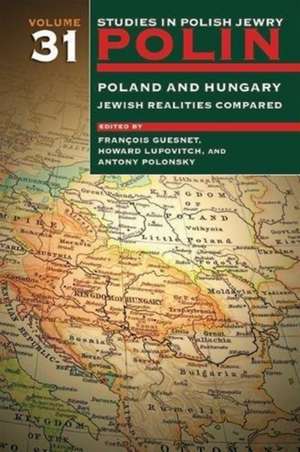Polin: Studies in Polish Jewry Volume 31 – Poland and Hungary: Jewish Realities Compared
Autor François Guesnet, Howard Lupovitch, Antony Polonskyen Limba Engleză Paperback – 18 dec 2018
Preț: 348.12 lei
Nou
Puncte Express: 522
Preț estimativ în valută:
66.61€ • 69.69$ • 55.34£
66.61€ • 69.69$ • 55.34£
Carte disponibilă
Livrare economică 13-27 martie
Preluare comenzi: 021 569.72.76
Specificații
ISBN-13: 9781906764722
ISBN-10: 1906764727
Pagini: 500
Dimensiuni: 156 x 234 x 31 mm
Greutate: 0.91 kg
Editura: LUP – Littman Library
ISBN-10: 1906764727
Pagini: 500
Dimensiuni: 156 x 234 x 31 mm
Greutate: 0.91 kg
Editura: LUP – Littman Library
Notă biografică
Descriere
In the early 1900s the Jewish communities of Poland and Hungary were the largest in the world and the most vibrant, yet despite the obvious similarities historians have preferred to highlight the differences and emphasize the central European character of Hungarian Jewry. Collectively, these essays offer a very different perspective.
